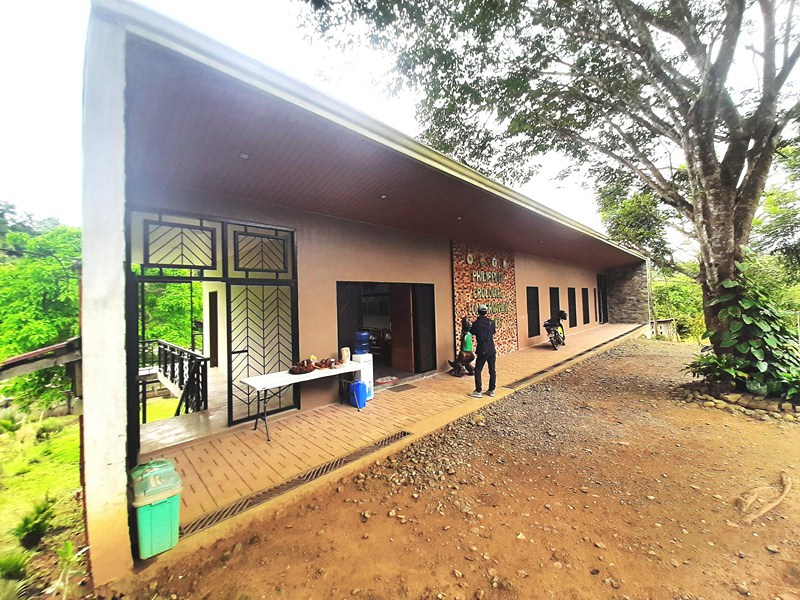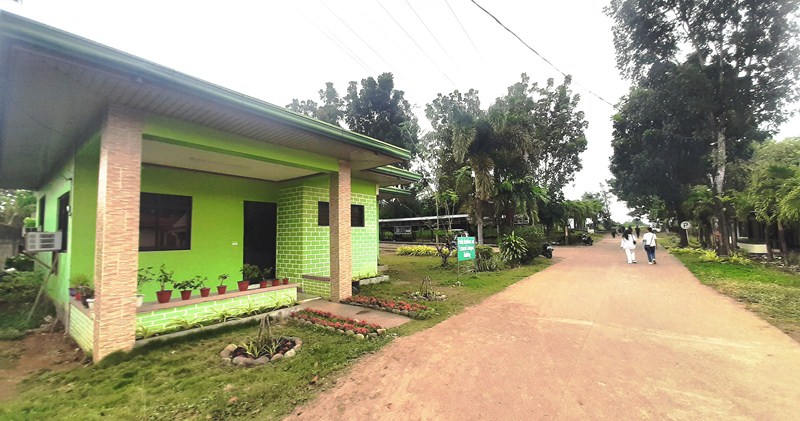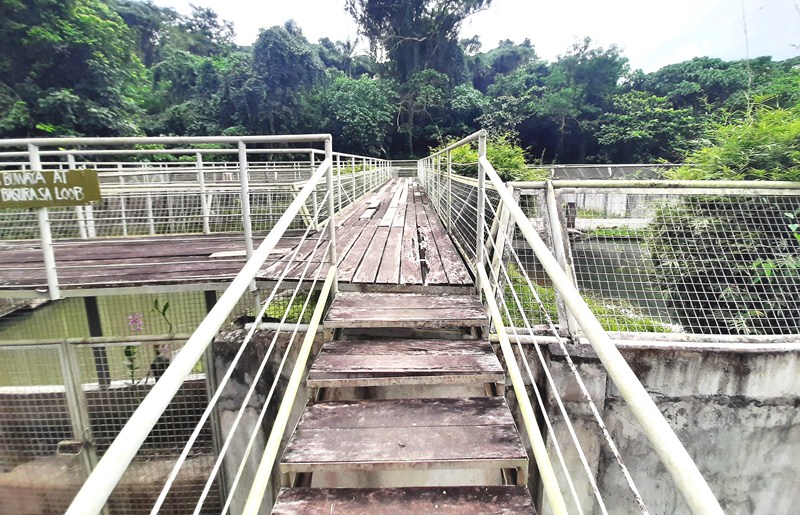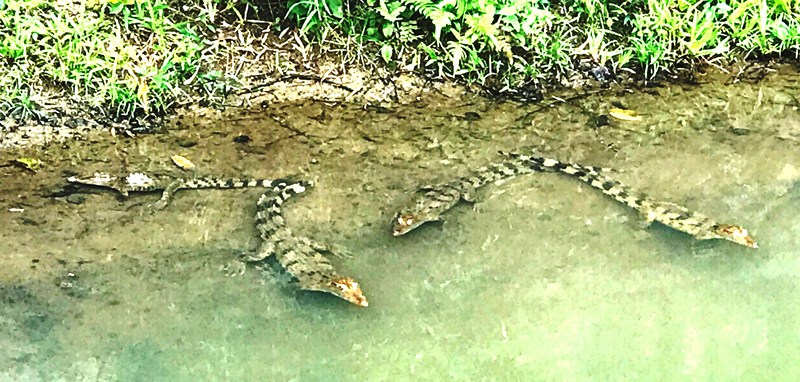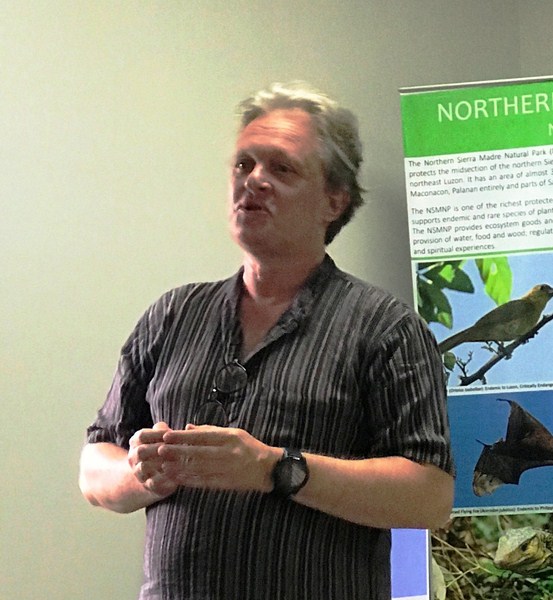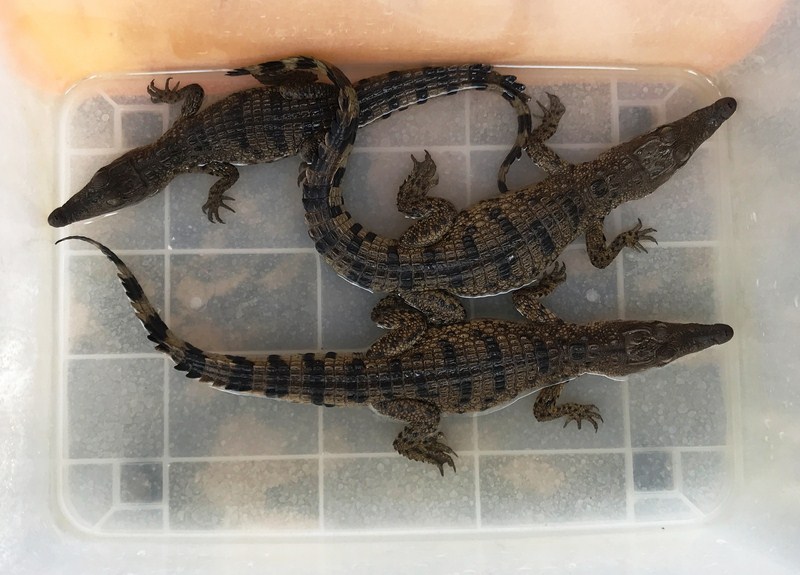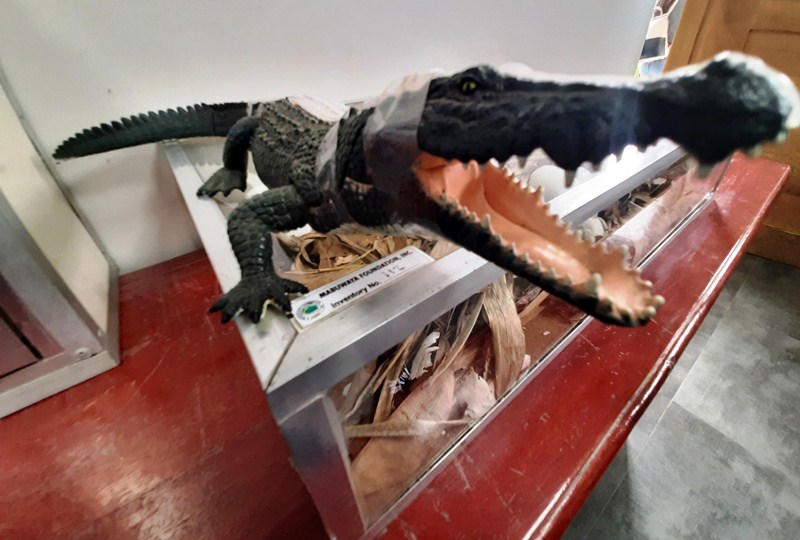After our second visit to Meraki Garden in Reina Mercedes, a 29-km. (45-min.) drive brought us to the Isabela State University campus in San Mariano where we were to visit the Philippine Crocodile Conservation Center (PCCC). From the entrance, it was still a 750 m. walk to the center. Inaugurated last April 19, 2022, the PCCC is a joint project of Isabela State University, the local government of San Mariano and the Mabuwaya Foundation, and supported by the Department of Environment and Natural Resources (DENR) and the Department of Tourism (DOT) which plays an important role in sustaining and promoting the project as a tourism destination.
Check out “Meraki Garden”
The remote rivers and wetlands of the town hosts one of only two viable wild sub-populations (the other is in Southwest Mindanao), of the endemic, Luzon-origin Philippine freshwater crocodile (Crocodylus mindorensis or burakot in the Ilocano tongue) which is classified as Critically Endangered on the International Union for Conservation of Nature (IUCN) Red List of Threatened Species and is not found anywhere else in the world. Close to extinction, less than 100 mature individuals remain in the wild, making the animal even more endangered than the Philippine eagle.
The Mabuwaya Foundation, a Filipino-Dutch non-government organization, works with local communities to conserve the remnant wild populations of the Philippine crocodile and its habitat. Apart from dedicated conservation and outreach programs (supported by luxury fashion brand Lacoste, founder Michel Lacoste even visited the park in 2012), they train community volunteers/sanctuary guards in Philippine crocodile monitoring activities and environmental law enforcement, thus becoming their partners in the field. Together with our community volunteers, they also assist in the recovery of the population of the Philippine crocodile by searching and protecting nests.
The PCCC was made possible through donations to the Mabuwaya Foundation and financial support from international zoos in Australia (Zoos Victoria) and Europe (ZSL London Zoo, Crocodiles of the World and Wild Discovery in the United Kingdom; La Ferme aux Crocodiles in France; Koln Zoo in Germany; Bergen Aquarium in Norway; The Blue Planet, Krokodille Zoo and Terrariet – Reptile Zoo in Denmark; Zagreb Zoo in Croatia; and Protivin Crocodile Zoo in the Czech Republic) that have the Philippine crocodile in their collection.
The center consists of a Visitors Building and crocodile holding pens used to house adult crocodiles for the first conservation breeding program for the critically small population of Philippine crocodiles, and for wild-born hatchling crocodiles. Larger juvenile crocodiles raised in the center are then transferred to enclosures before they are released back into the wild to augment the critically small wild population of the rarest crocodile in the world and one of the rarest animals on the planet. The PCCC will play an important role in sustaining crocodile conservation activities in San Mariano and in generating income for communities conserving crocodiles.
The Visitors Building will be used for environmental education and as the gateway for visitors who want to explore the wilderness areas, of San Mariano and the Northern Sierra Madre Natural Park, to see Philippine crocodiles and many other rare endemic species in the wild. A municipal rearing station, near the Pinacanauan River, was also established in Brgy. Mananga, where a significant population was discovered in 1999.
During a briefing held at the Visitors Building, Dutch biologist Mr. Merlijn Van Weerd, Chief Executive Officer of Mabuwaya Foundation, highlighted that the area is not a zoo, but a conservation center and that Mabuwaya Foundation looks forward to make it a self-sustaining conservation center. He also shared how the conservation of the Philippine Crocodile came into being. It started in 1999 but it was in 2001 when the sanctuary in San Mariano, Isabela was declared as the first Philippine Crocodile Sanctuary in the Philippines and the first community crocodile sanctuary in the world.
Ms. Marites “Tess” Gatan-Balbas, Chief Operating Officer of the Mabuwaya Foundation, said that this reclusive and nonaggressive endemic species is nationally protected and because of its relatively small size (most adults measure five feet in length, with some known to reach maximum lengths of 10 feet), it does not pose a threat to people, as compared to the more common and larger Indo-Pacific saltwater crocodile (Crocodylus porosus), the other crocodile species in the Philippines, which most people are familiar with.
According to Tess, even though Philippine crocodiles are too small to be man-eaters, they have a very bad image in the Philippines as they were regarded as pests and a threat to livestock and humans. They are even associated with corrupt politicians. The population of this species is very small due to habitat loss, hunting and killing out of fear. However, the Philippine crocodile was not always hated as indigenous communities revered, and sometimes still do, this species as a protector of forest spirits or even as their ancestors or twins. Philippine folklore has lots of stories about mythical crocodiles, often portraying the species in a positive way. The general message of many of these stories is: if you don’t harm the crocodile, the crocodile will not harm you.
The Philippine crocodile, the key predator in wetland ecosystems and an indicator of healthy natural river systems, is as much part of the natural and cultural heritage of the Philippines as the Philippine eagle or the Philippine tarsier. Though nationally protected by virtue of the Republic Act 9147 (the Wildlife Resources Conservation and Protection Act of 2001), enforcement of this law is, however, very weak, and Philippine crocodiles remain severely threatened in the Philippines.
After the briefing, we proceeded to the holding pens to observe the actual crocodiles, seeing one mature crocodile and a number of hatchlings. With the supervision of the caretakers, some of us handled the crocodile hatchlings.
Philippine Crocodile Conservation Center: Isabela State University-San Mariano Campus, San Mariano, Isabela. Mobile numbers (0917) 50-0558 (Ms. Corazon M. Pua – Community Affairs Officer) and (0920) 974-2379 (Ms. Marites Gatan-Balbas). Visits to the rearing staion or the crocodile sanctuarieswithin the park must be arrange at the municipal hall.
Isabela Provincial Tourism Office: Provincial Capitol Complex, City of Ilagan, Isabela. Tel: (078) 323-3146. Mobile number: (0917) 317-3820. E-mail: isabelatourismoffice@gmail.com.
Isabela Provincial Information Office: Provincial Capitol Complex, City of Ilagan, Isabela. Tel: (078) 323-0248. Mobile number: (0927) 395-7555. E-mail: letters_info@yahoo.com.
How To Get There: San Mariano is located 432.8 kms. (an 8-hour drive) from Manila, 35 kms. (a 45-min. drive) from the City of Ilagan and 40.6 kms. (a 55-min. drive) from Cauayan City. The junction to San Mariano lies between the cities of Cauayan and Ilagan and the town of Naguilian. Alight at the junction, and hail a passing jeepney (from Ilagan or Cauayan) for the final 20-km. stretch to San Mariano, via Benito Soliven.

